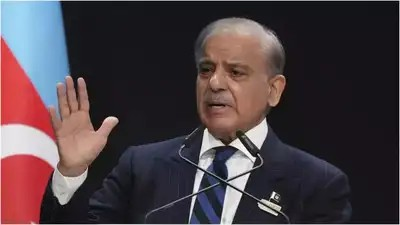Shehbaz Sharif’s Stunning Confession on India’s BrahMos Missile Strikes
In a rare and revealing statement, Pakistani Prime Minister Shehbaz Sharif admitted that India’s BrahMos missile strikes, executed during Operation Sindoor on the night of May 9-10, 2025, completely disrupted Pakistan’s planned military response to the Pahalgam terror attack. Sharif confessed that the Pakistan Army was caught unprepared as Indian missile strikes obliterated key command and control hubs before Pakistan’s retaliation could begin.
India’s military operation, a response to the brutal terror attack in Jammu and Kashmir on April 22, targeted major Pakistani airbases and terror infrastructure. This bold and precise action not only destroyed sensitive military assets but also forced Pakistan to halt its planned counteroffensive. Sharif’s statement confirms India’s overwhelming technological edge and strategic foresight, marking a significant shift in South Asian deterrence dynamics.
Indian Preemptive Strikes and Strategic Surprise: The BrahMos Edge
According to Shehbaz Sharif, Pakistan’s military had planned a retaliatory strike against India for 4:30 am on May 10, shortly after Fajr (morning) prayers. However, at around 2:30 am, Sharif was informed by General Asim Munir (now Field Marshal) that India had already launched a barrage of BrahMos missiles across strategic targets in Pakistan. The strikes, carried out under Operation Sindoor, devastated Nur Khan Airbase (Rawalpindi airport), Murid base in Chakwal, and multiple other military facilities across Pakistani provinces. These attacks critically damaged Pakistan’s northern air command, air refueling capability, and C4I (Command, Control, Communications, Computers, and Intelligence) infrastructure.
Pakistan PM Shehbaz Sharif admits that India hit their airbases with BrahMos before 'Aand forces' could act.
— BALA (@erbmjha) May 29, 2025
Op Sindoor hit so hard, he had no choice but to admit it publicly 🗿 pic.twitter.com/Dl7cWr2nUx
Sharif acknowledged that Pakistan was “caught unawares” by the speed and accuracy of the BrahMos strikes. The admission is a strategic validation of India’s doctrine of proactive response and technological dominance, particularly through precision stand-off weapons like BrahMos, which reduced Pakistan’s ability to coordinate and execute a counterstrike.
These revelations also underscore a crucial moment in India-Pakistan military history, where preemptive force projection successfully neutralized a potential regional escalation, without crossing into full-scale war. India’s ability to destroy military assets before hostile forces could mobilize has redefined its deterrent credibility in South Asia.
Operation Sindoor’s Wider Impact and Pakistan’s Forced De-escalation
The BrahMos strike was part of a wider retaliatory framework: Operation Sindoor, launched after the April 22 Pahalgam terror attack, which killed 26 civilians. The operation included targeted air and missile strikes on nine terror base camps in Pakistan and Pakistan-occupied Kashmir, targeting groups like Jaish-e-Mohammed, Lashkar-e-Taiba, and Hizbul Mujahideen.
Sharif’s statement reveals that had India not struck first, Pakistan was prepared to launch its offensive under the pretext of “responding to aggression.” This highlights how Pakistan’s military doctrine remains intertwined with the activities of non-state actors, often blurring the line between state and terror-sponsored actions. In the aftermath of the strikes, military leaders from both countries engaged in backchannel communication, leading to a ceasefire agreement on May 10. The rapid shift from conflict preparation to de-escalation suggests that India’s strategic timing disrupted Pakistan’s escalation ladder, leaving Islamabad with no viable military option.
Sharif’s rare public confession exposes the vulnerability of Pakistan’s air defences, the effectiveness of India’s missile force, and a broader shift in the Indo-Pak deterrence equation. It reaffirms India’s willingness and capability to act decisively and preemptively in response to terror provocations, with minimal collateral impact and maximum strategic gain.





















